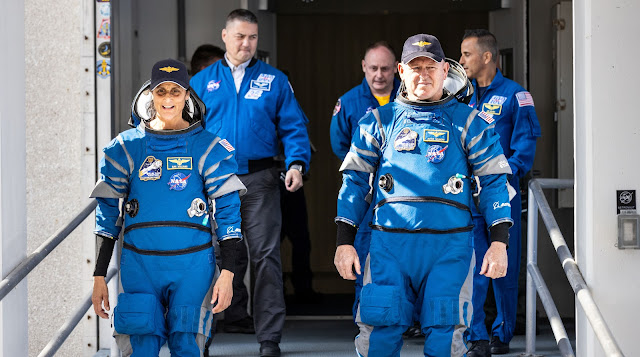Wide-field View: Star Cluster NGC 6440 | James Webb Space Telescope
Globular clusters like NGC 6440 are roughly spherical, tightly packed, collections of old stars bound together by gravity. They can be found throughout galaxies, but often live on the outskirts. They hold hundreds of thousands to millions of stars that are on average about one light-year apart, but they can be as close together as the size of our Solar System. NGC 6440 is known to be a high-mass and metal-rich cluster that formed and is orbiting within the Galactic bulge. It is a dense, near-spherical region of old stars in the inner part of the Milky Way.
This image was obtained with 2023 data from Webb’s Near-InfraRed Camera (NIRCam) as part of an observation program to explore the stars in the cluster and to investigate details of the cluster’s pulsars. A pulsar is a highly magnetized, rotating neutron star that emits a beam of electromagnetic radiation from their magnetic poles. To us, that beam appears as a short burst or pulse as the star rotates. Pulsars spin extremely fast. Astronomers have clocked the fastest pulsars at more than 716 rotations per second, but a pulsar could theoretically rotate as fast as 1500 rotations per second before slowly losing energy or breaking apart.
The new data obtained by the science team indicate the first evidence from Webb observations of abundance variations of helium and oxygen in stars in a globular cluster. These results open the window for future, in-depth investigations of other clusters in the Galactic bulge, which were previously infeasible with other telescope facilities given the significant crowding of stars in the cluster and the strong reddening caused by interstellar dust between the cluster and Earth.
Image Description: A spherical collection of stars fills the entire view. The cluster is dominated by a concentrated group of bright white stars at the center, with several large yellow stars scattered throughout the image. Many of the stars have visible diffraction spikes. The background is black.
Credit: ESA/Webb, NASA & CSA, P. Freire
Acknowledgement: M. Cadelano and C. Pallanca
Release Date: May 1, 2024
#NASA #Space #Astronomy #Science #Stars #StarClusters #NGC6440 #Sagittarius #GalacticBulge #Constellation #MilkyWayGalaxy #Cosmos #Universe #JWST #Infrared #SpaceTelescopes #ESA #CSA #GSFC #STScI #UnitedStates #STEM #Education
.jpg)

.jpg)









.jpg)